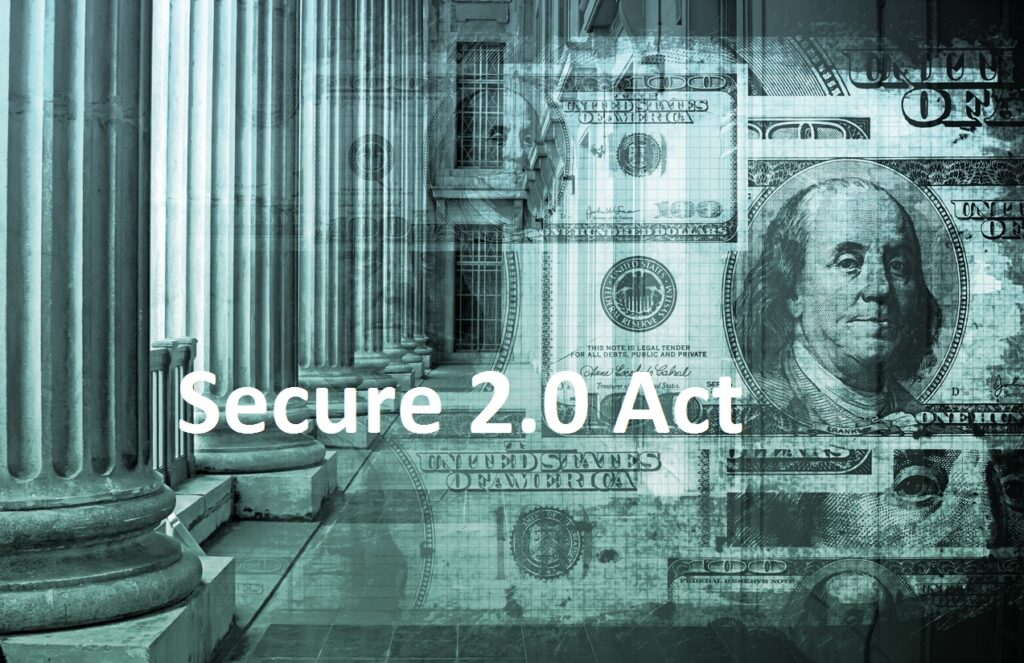The SECURE 2.0 Act, a follow-up to the Setting Every Community Up for Retirement Enhancement (SECURE) Act of 2019, continues to remove barriers that may have prevented Americans from saving for retirement through their workplace retirement plan. A recent survey showed that three out of four employees rely solely on their employer’s retirement plan as their primary saving vehicle.* One of the Act’s mandatory provisions focuses on expanding eligibility to long-term part-time employees.
SubscribeWhat Is A Long-Term Part-Time Employee?
The term “long-term part-time employee” or “LTPT” was created by the original SECURE Act. An LTPT employee is any employee who, in each of the last three consecutive years (long-term), worked at least 500 but less than 999 hours (part-time). Before the SECURE Act took effect, employees who did not meet the maximum requirement (age 21 and 1,000 hours of service during a 12-month period) could be excluded from participating in the plan.
LTPT Rules Effective for Plan Years Beginning in 2024
Effective for plan years beginning in 2024, 401(k) plans must allow LTPT employees to defer into a 401(k) Plan. Below are other rules applicable to LTPT employees.
-
- Employees who become eligible for elective deferrals under the new rule can still be excluded from other types of contributions (for example, employer matching or non-elective contributions) until they meet the plan’s eligibility requirements. If employers do make contributions to LTPT employees, their vesting in these contributions must increase once they work 500 or more hours each year.
-
- Only service starting in 2021 and after is taken into account for the 3-year eligibility and vesting.
-
- For nondiscrimination testing and other compliance tests, employers can exclude any long-term part-time employee who becomes eligible until the employee meets the plan’s eligibility requirements for testing.
Secure 2.0 – Removing Further Obstacles For LTPT Employees
Effective for plan years beginning in 2025, SECURE 2.0 amended the original SECURE Act in the following ways:
-
- 401(k) plans – the eligibility wait time for LTPT employees is shortened from three consecutive years to two years if the employee is at least 21 years of age. Service before 2021 is still excluded for purposes of eligibility and vesting.
-
- 403(b) plans – LTPT rules are extended to ERISA 403(b) plans. Service before 2023 is excluded for purposes of eligibility and vesting in these plans.
Under this new 2-year rule, long-term part-time employees may start to participate in the plan for plan years beginning in 2025.
Hours Needed For Long-Term Part-Time Employees To Participate
|
2023 |
2024 |
2025 |
|
500 hours |
500 hours |
Eligible to participate in the retirement plan |
Here are a few helpful tips for plan sponsors to consider when implementing this new rule:
- Keep Updated Records – Plan sponsors should keep up-to-date records of all part-time and full-time employees and share this data with their recordkeeper and payroll provider. Service providers cannot keep track of an employee’s status if they do not receive accurate files.
- Consider Plan Design Changes – There may be plan design changes that could be implemented to make the tracking process run smoother. A few examples include:
- Changing eligibility to defer into the plan so that all part-time employees are eligible and are not LTPT employees. Careful design considerations must be made before making this change.
- Allowing all employees to make elective deferrals but limiting employer contributions to at least 1,000 hours.
- Filing Form 5500 – The inclusion of LTPT employees may result in plan sponsors needing to file the large employer Form 5500 in 2024 or later. Therefore, an independent audit may also be needed.
Your TRI-AD Team Is Here To Help
Overall, this new rule will improve coverage for part-time employees who have been with their employer for more than two years. Additional guidance from the Department of Labor and IRS is still needed to provide more details regarding implementing the LTPT employee rules. In the meantime, plan sponsors should begin working with their service providers to review their plan design and recordkeeping system capabilities to ensure readiness for these new rules.
Plans must be amended for the new SECURE 2.0 provisions no later than the end of the first plan year beginning on or after January 1, 2025 (January 1, 2027, for governmental plans and collectively bargained plans). Your TRI-AD Team is available to help you answer any questions you may have about how this new rule may impact your employee population.
*plansponsor.com 7/19/22
TRI-AD and our Associates’ suggestions or recommendations shall not constitute legal advice. No content on our website can be construed as tax or legal advice, and TRI-AD may not be considered your legal counsel or tax advisor. Clients are encouraged to consult with their tax advisor and/or attorney to determine their legal rights, responsibilities, and liabilities. This includes the interpretation of any statute or regulation, federal, state, or local; and/or its application to the clients’ business activities.

